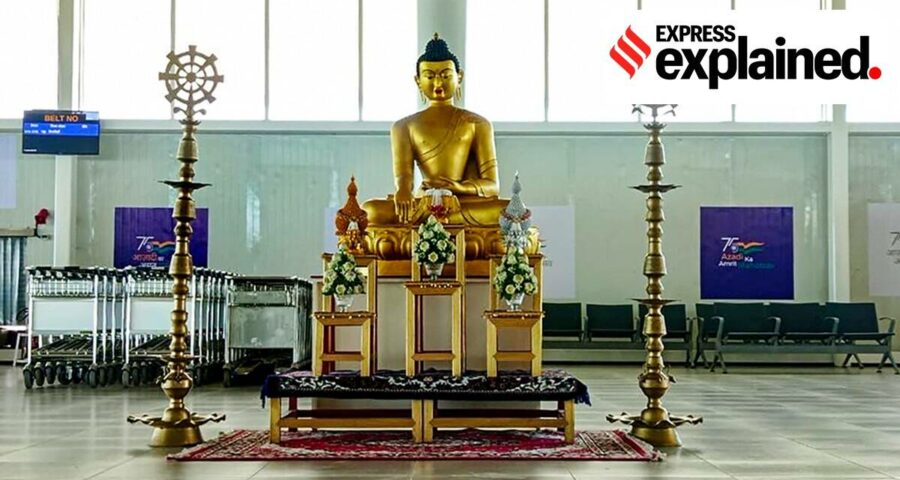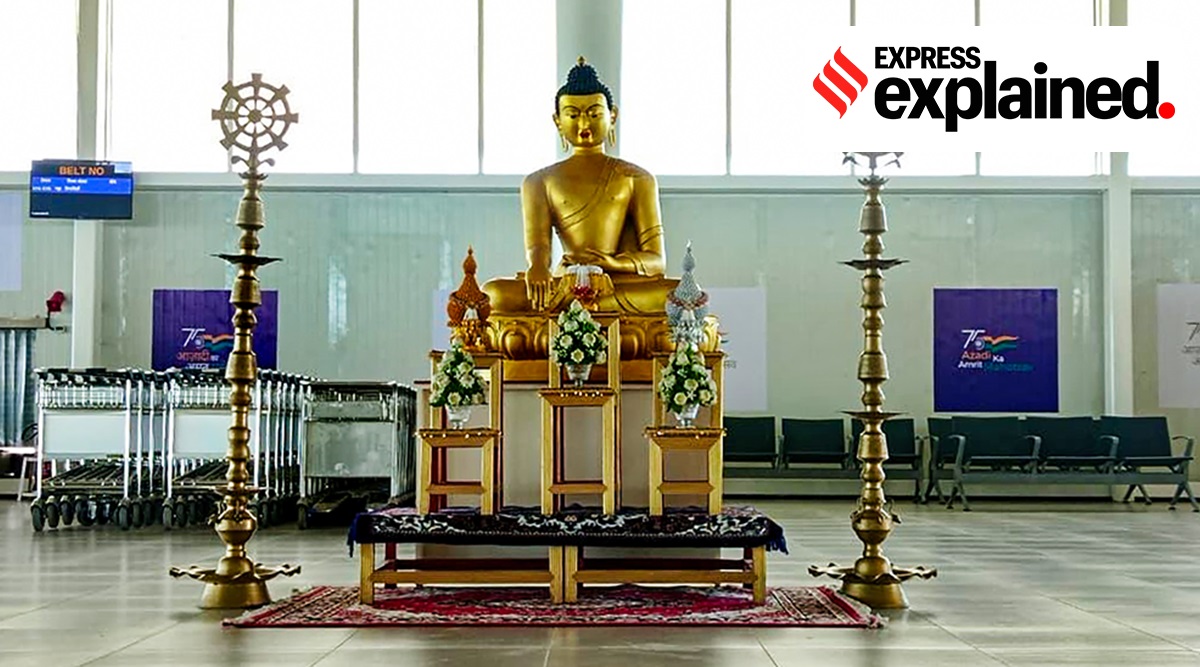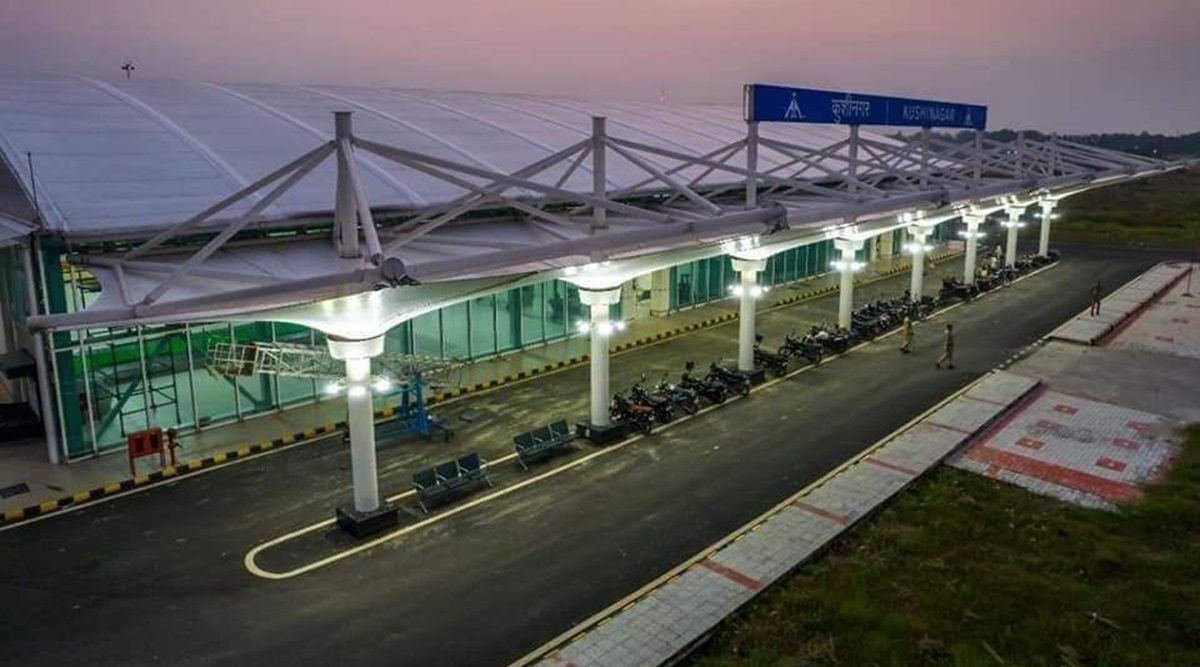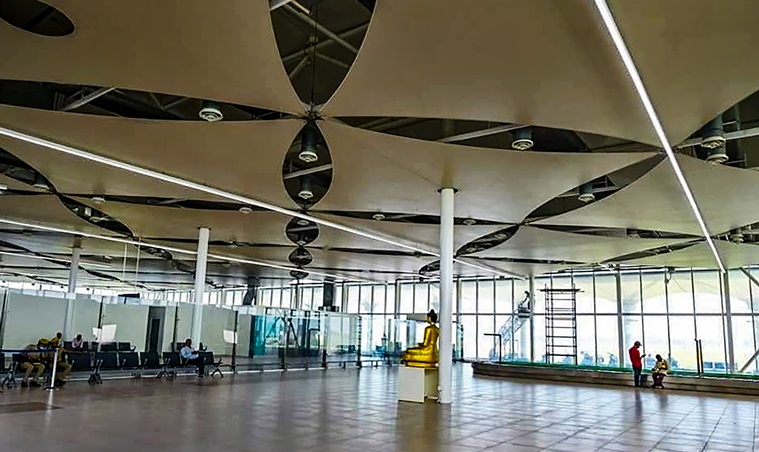Prime Minister Narendra Modi on Wednesday inaugurated an international airport at Kushinagar in Eastern Uttar Pradesh. Kushinagar is one of the poorest districts in the state in terms of income levels.
Prime Minister Narendra Modi on Wednesday (October 20) inaugurated an international airport at Kushinagar in Eastern Uttar Pradesh. The Prime Minister said the development of Kushinagar is one of the key priorities of the governments at the Centre and in UP.
Buddhist pilgrimage site with very few Buddhists
Kushinagar is the place where The Buddha attained Mahaparinirvana in 483 BC, and is therefore, an international Buddhist pilgrimage centre. However, it has a negligible population of Buddhists.
According to the Census of India 2011, out of the 35.64 lakh population of Kushinagar district, the majority were Hindu (29.28 lakh), followed by Muslim (6.20 lakh), and Christian (5,006). The Buddhist population of the district was just 4,619, or 0.12 per cent of the total.
Ten other districts of UP — Kheri, Maharajganj, Siddharthnagar, Sultanpur, Basti, Mainpuri, Jaunpur, Pratapgarh, Hardoi, and Azamgarh — have larger Buddhist populations than Kushinagar.
Kheri, which has been in the news for the deaths of eight people including four protesting farmers on October 3, had the largest Buddhist population (18,454) across all districts of UP in 2011.
One of the poorest districts of the state
Kushinagar is one of the poorest districts in Uttar Pradesh in terms of income levels.
According to District Domestic Product (DDP) data released by the Uttar Pradesh Directorate of Economics & Statistics, Kushinagar’s per capita DDP at constant prices (2011-12) was Rs 27,229.23 during FY 2019-20 — far less than UP’s per capita Gross State Domestic Product (GSDP) of Rs 44,618.26; and less than a third of India’s per capita GDP of Rs 94,566 in the same year.
At current prices, Kushinagar’s per capita DDP of Rs 41,250.15 is much lower than UP’s per capita GSDP (Rs 65,704.28) and the country’s per capita GDP (Rs 1,34,186).
In terms of per capita DDP, Kushinagar was 61st among UP’s 75 districts in 2019-20, the latest comparable figures available.
Agriculture, Forestry and Fisheries contributed about 36.17 per cent to the DDP of Kushinagar, while the contribution of the Manufacturing sector was just 4.85 per cent.
The tertiary sector (Services) contributed about 50 per cent of the district’s domestic product.
Congress-BJP battleground
Kushinagar is in the Gorakhpur division in the eastern part of the state. The district headquarters is at Padrauna. Kushinagar was part of the neighbouring Deoria district until it became a separate district on May 13, 1994, when Mulayam Singh Yadav was Chief Minister.
Kushinagar has seven Assembly constituencies — Khadda, Padrauna, Tamkuhi Raj, Fazilnagar, Kushinagar, Hata and Ramkola. Five of these Assembly segments are part of Kushinagar Lok Sabha constituency; the remaining two — Tamkuhi Raj and Fazilnagar — are part of the Deoria Lok Sabha constituency.
Of the seven Assembly seats in Kushinagar, five are currently with the BJP, which has a massive majority in the Assembly. The Congress and Suheldev Bhartiya Samaj Party have one seat each.
Political heavyweights like Swami Prasad Maurya, who is Minister for Labour, Employment and Coordination in the Cabinet of Chief Minister Yogi Adityanath, represents the Padrauna Assembly seat, while Ajay Kumar Lallu, president of the Uttar Pradesh Congress Committee, represents Tamkuhi Raj.
The Kushinagar Lok Sabha seat is represented by the BJP’s Vijay Kumar Dubey. The BJP had wrested the seat from the Congress in 2014, when Rajesh Pandey (Guddu) defeated the sitting Congress MP and minister in the Manmohan Singh government, RPN Singh.
Before the 2009 Lok Sabha elections, the Kushinagar Lok Sabha seat was known as Padrauna.
Newsletter | Click to get the day’s best explainers in your inbox
Source: Read Full Article




